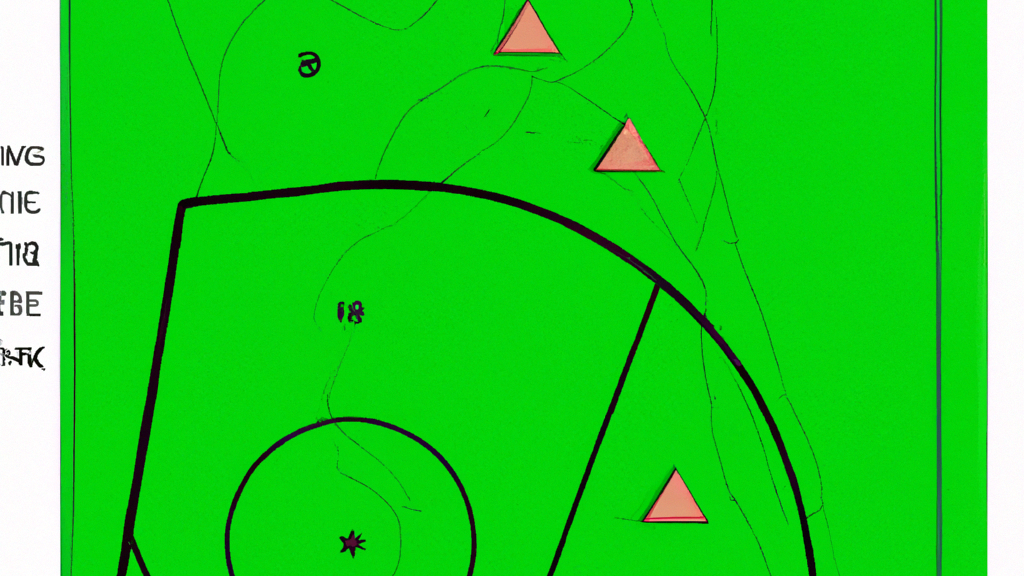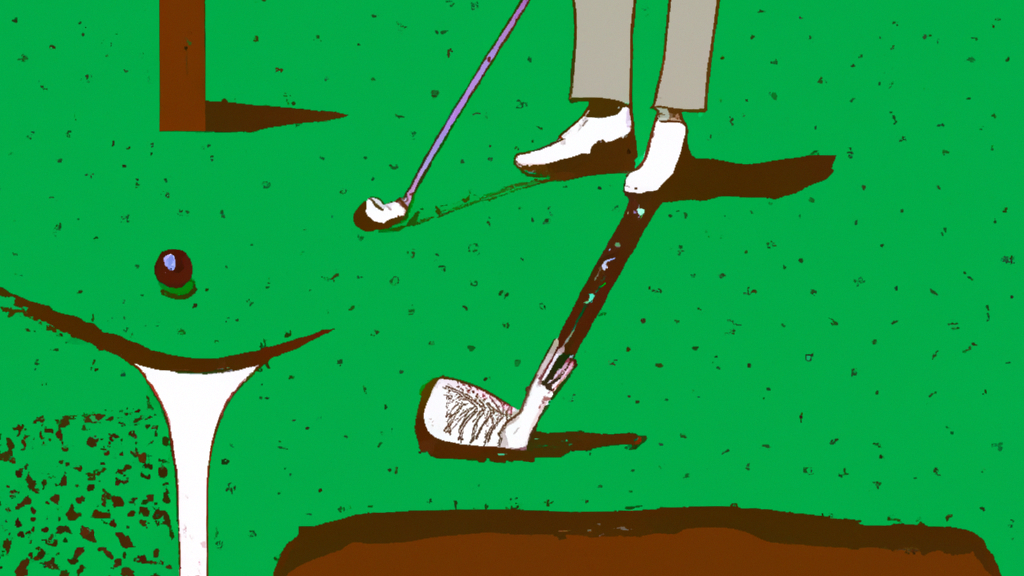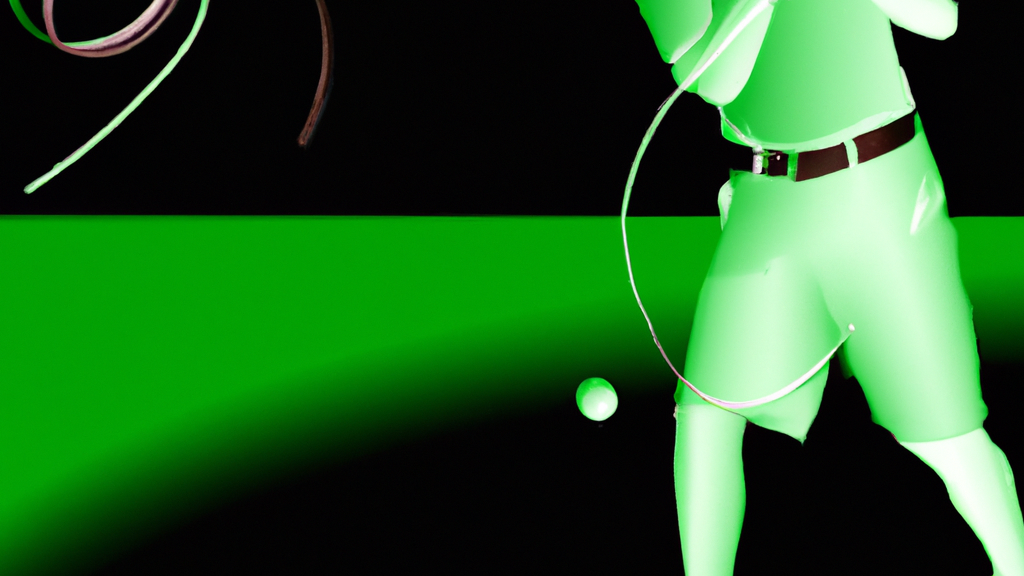THE MENTAL GAME OF COURSE CONDITIONS: ADJUSTING TO CHANGES IN WEATHER AND COURSE SET-UP
Golf is a game of precision, strategy, and mental toughness. But what happens when the course conditions change? Whether it’s a sudden downpour or a change in course set-up, golfers must be able to adjust their mental game to stay on top of their game. In this blog post, we’ll explore the mental game of course conditions and how golfers can adapt to changes in weather and course set-up. From staying focused and positive to adjusting their swing and shot selection, we’ll provide tips and strategies to help golfers maintain their mental edge on the course.
So, whether you’re a seasoned pro or a weekend warrior, read on to learn how to master the mental game of course conditions and take your golf game to the next level.

THE MENTAL GAME OF COURSE CONDITIONS: ADJUSTING TO CHANGES IN WEATHER AND COURSE SET-UP
Golf is a game of precision, skill, and strategy. It is a sport that requires a lot of mental focus and concentration. Golfers need to be able to adjust to changes in weather and course set-up to be successful. The mental game of course conditions is an important aspect of golf that is often overlooked. In this article, we will discuss how golfers can adjust to changes in weather and course set-up to improve their game.
Weather Conditions
Weather conditions can have a significant impact on a golfer’s game.
Wind
Wind is one of the most significant factors that can affect a golfer’s game. It can change the direction and speed of the ball, making it difficult to make accurate shots. Golfers need to be able to adjust their game to compensate for the wind. They can do this by changing their stance, grip, and swing speed.
When playing in windy conditions, golfers should aim to keep the ball low. This will help to reduce the impact of the wind on the ball’s flight. They should also aim to hit the ball with a lower trajectory. This will help to keep the ball on a straighter path and reduce the impact of the wind.
Rain
Rain can also have a significant impact on a golfer’s game. It can make the course wet and slippery, making it difficult to make shots. Golfers need to be able to adjust their game to the wet conditions to be successful.
When playing in wet conditions, golfers should aim to keep the ball on the fairway. This will help to reduce the impact of the wet conditions on the ball’s flight. They should also aim to hit the ball with a higher trajectory. This will help to keep the ball on a straighter path and reduce the impact of the wet conditions.
Temperature
Temperature can also affect a golfer’s game. Cold temperatures can make the ball less bouncy, making it difficult to make shots. Hot temperatures can make the ball more bouncy, making it difficult to control.
When playing in cold temperatures, golfers should aim to hit the ball with a higher trajectory. This will help to keep the ball on a straighter path and reduce the impact of the cold temperatures. They should also aim to hit the ball with more force. This will help to compensate for the lack of bounce in the ball.
When playing in hot temperatures, golfers should aim to keep the ball low. This will help to reduce the impact of the hot temperatures on the ball’s flight. They should also aim to hit the ball with less force. This will help to control the ball’s bounce.
Course Set-Up
Course set-up can also have a significant impact on a golfer’s game. The placement of hazards, the length of the holes, and the condition of the greens can all affect a golfer’s ability to make shots. Golfers need to be able to adjust their game to the course set-up to be successful.
Hazards
Hazards are obstacles on the course that can make it difficult to make shots. They can include bunkers, water hazards, and trees.
Golfers need to be able to adjust their game to the placement of hazards to be successful.
When playing on a course with hazards, golfers should aim to keep the ball away from the hazards. They should also aim to hit the ball with a higher trajectory. This will help to keep the ball on a straighter path and reduce the impact of the hazards.
Length of Holes
The length of the holes can also affect a golfer’s game. Longer holes require more force and accuracy to make shots. Shorter holes require less force and accuracy.
When playing on a course with longer holes, golfers should aim to hit the ball with more force. They should also aim to hit the ball with a lower trajectory. This will help to keep the ball on a straighter path and reduce the impact of the length of the holes.
When playing on a course with shorter holes, golfers should aim to hit the ball with less force. They should also aim to hit the ball with a higher trajectory. This will help to keep the ball on a straighter path and reduce the impact of the length of the holes.
Condition of Greens
The condition of the greens can also affect a golfer’s game. Greens that are fast and smooth require more precision and accuracy to make shots. Greens that are slow and bumpy require less precision and accuracy.
When playing on greens that are fast and smooth, golfers should aim to hit the ball with less force. They should also aim to hit the ball with a higher trajectory. This will help to keep the ball on a straighter path and reduce the impact of the fast and smooth greens.
When playing on greens that are slow and bumpy, golfers should aim to hit the ball with more force. They should also aim to hit the ball with a lower trajectory. This will help to keep the ball on a straighter path and reduce the impact of the slow and bumpy greens.
Conclusion
The mental game of course conditions is an important aspect of golf that is often overlooked. Golfers need to be able to adjust to changes in weather and course set-up to be successful. They can do this by changing their stance, grip, and swing speed. They should also aim to keep the ball low in windy conditions, on the fairway in wet conditions, and hit the ball with a higher trajectory in cold temperatures. When playing on a course with hazards, they should aim to keep the ball away from the hazards and hit the ball with a higher trajectory. When playing on longer holes, they should aim to hit the ball with more force and a lower trajectory. When playing on greens that are fast and smooth, they should aim to hit the ball with less force and a higher trajectory. When playing on greens that are slow and bumpy, they should aim to hit the ball with more force and a lower trajectory. By adjusting their game to the weather and course set-up, golfers can improve their game and become more successful.

- 5.6 Playing Conditions Calculation
Course conditions,; Weather conditions, and/or; Course set-up. The playing conditions calculation (PCC) determines whether playing conditions on the day … - Playing Conditions Calculation – World Handicap System: USGA | R&A
Oct 29, 2019 … However, these values are based on normal playing conditions and factors such as weather or course set-up can make a course play harder or … - FAQs – What is the Playing Conditions Calculation (PCC)?
… primarily due to weather and/or course set up. If scores were abnormally low or high, a PCC adjustment between -1 and +3 will be applied in the … - Golf faces tough climate change adaptation drive
Jul 22, 2013 … Organisations like the Scottish Golf Environment Group (SGEG) have been set up to help courses move in the right direction,. “The effect of … - FSX 2020 User Manual | Foresight Sports
Select the desired weather settings and course conditions for the round. … Add/change player information, edit the shortcuts bar, adjust in-game settings, … - JGS introduces its new Course Rating Methodology– The Course …
Feb 13, 2021 … Junior Golf Scoreboard, the go to authority for junior golfer … weather conditions or simply that the course set-up differs from the … - How do you account for temporary hole closures on your scorecard?
Nov 2, 2021 … How should you mark your score when holes at your course are … which can be caused by course setup as well as weather — an adjustment is … - 10 Things to Consider While Using Auto-Pilot System on Ships
Aug 12, 2021 … This feature cuts out the need of manual course changes and alterations … the setting to adapt to the changing weather and sea conditions. - Climate crisis: Golf courses on borrowed time as Earth’s weather …
Dec 14, 2021 … The 30 or so golf courses in the Salt Lake County of Utah drink up … Climate change crisis: As Earth’s weather patterns become wilder, … - Race Suspension Tuning Basics, 7 Things You Need to Know
Nov 15, 2021 … To keep the right course, you’ll start by Increasing ground contact or … Your setup will change as the weather changes, and this is where …
Fun facts about The Mental Game of Course Conditions: Adjusting to Changes in Weather and Course Set-Up
- Golf originated in Scotland in the 15th century and was originally played with a stick and ball.
- The first golf course in the United States was built in 1888 at Van Cortlandt Park, New York City.
- The Masters Tournament, one of golf’s four major championships, has been held annually since 1934 at Augusta National Golf Club.
- Professional golfer Tiger Woods holds the record for most consecutive weeks as world number one (281).
- In golf scoring, a birdie is when a player completes a hole one stroke under par while an eagle is two strokes under par.
- The Ryder Cup is an international team competition between Europe and the United States that takes place every two years.
- Arnold Palmer popularized “Arnold Palmer” drink which consists of half lemonade and half ice tea





